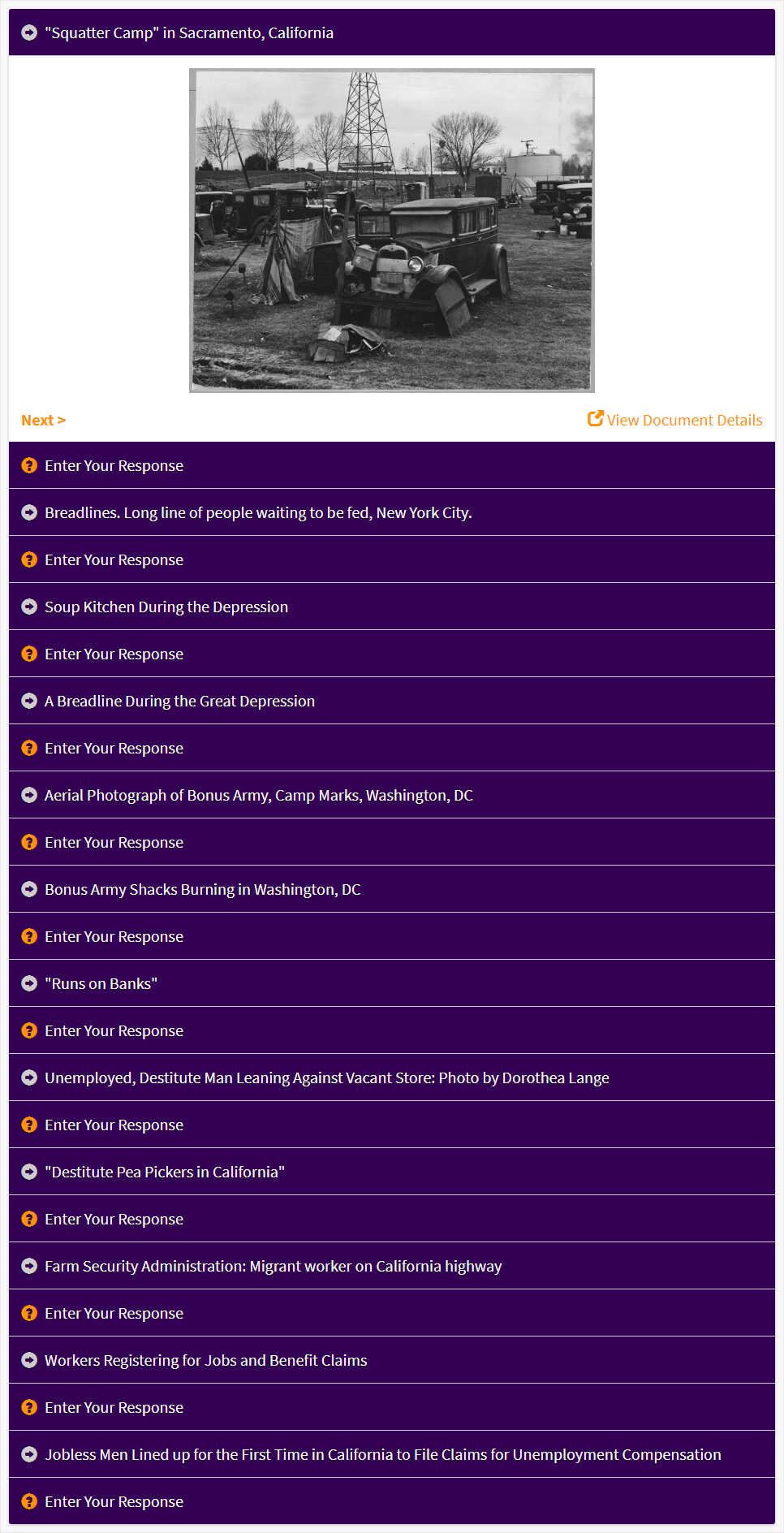The Impact of the Great Depression: Photograph Analysis
Making Connections

About this Activity
- Created by:National Archives Education Team
- Historical Era:The Great Depression and World War II (1929-1945)
- Thinking Skill:Historical Analysis & Interpretation
- Bloom's Taxonomy:Analyzing
- Grade Level:Middle School
In this activity, students will analyze a series of photographs taken by photographers around the United States documenting the impact of the Great Depression on people and society.
Documents in this activity
- Aerial Photograph of Bonus Army, Camp Marks, Washington, DC
- Breadlines. Long line of people waiting to be fed, New York City.
- "Runs on Banks"
- A Breadline During the Great Depression
- "Destitute Pea Pickers in California"
- Farm Security Administration: Migrant worker on California highway
- Jobless Men Lined Up for Unemployment Compensation
- "Squatter Camp" in Sacramento, California
- Bonus Army Shacks Burning in Washington, DC
- Workers Registering for Jobs and Benefit Claims
- Soup Kitchen During the Depression
- Unemployed, Destitute Man Leaning Against Vacant Store: Photo by Dorothea Lange




